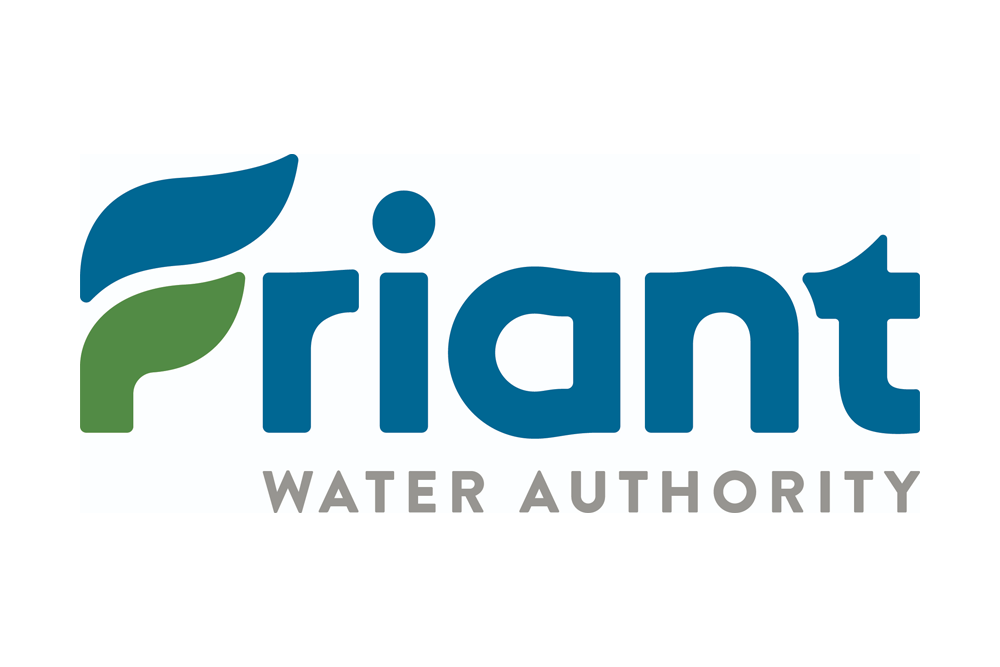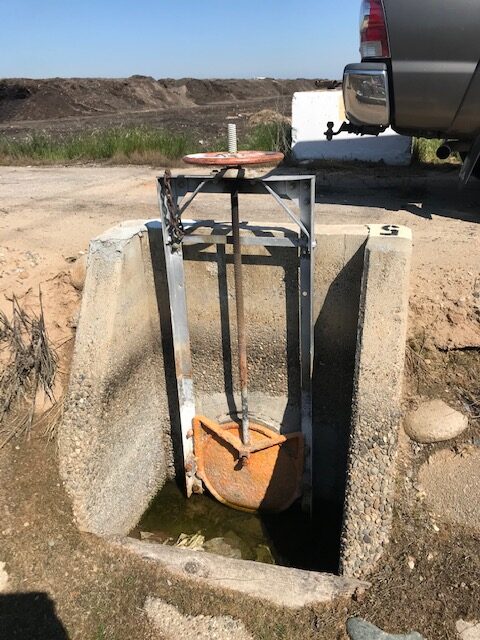Rates have been set for the irrigated acres in each of the three Madera County subbasins. The county Board of Supervisors meeting on April 12, 2022, as the GSA board of directors, approved rates to be sent to affected property owners. The funds raised will be used to implement the GSPs which call for investment in groundwater recharge, the Sites Dam project, residential well mitigation and payment for land to be taken out of production – Sustainable Agricultural Land Conservation (SALC).
The Meeting
The GSA Board meeting began at 10:30 a.m. in the county administration building as Chair Tom Wheeler recognized county Director of Water and Natural Resources Stephanie Anagnoson who was at the podium. While all five supervisors were present, as usual, there was attendance online via the Webex webinar. Also present virtually were representatives of Raftelis, the firm that has conducted the rate study, and Davids Engineering, consultants on this project.
Director Anagnoson in a series of slides reviewed what has been accomplished throughout this process and what the goals of the rate program are, namely, to provide financial self sufficiency to the three GSAs for the three subbasins (Madera, Chowchilla and Delta-Mendota) not covered by other water districts… known as the “white areas.” She pointed out that the eight other GSAs in the county have all developed programs to raise the necessary funds to implement their respective plans.
Rate Study
She went on to say that the staff was requesting acceptance of the Raftelis rate study work. This approval would allow the county staff to begin notification to affected owners of the irrigated acres about May 1 in anticipation of a Prop 218 vote. An official public hearing for final approval of these rates will be held at the board meeting set for June 21 when property owners may protest. At that meeting, if there is not a majority objecting, the Board may adopt the rates as noticed. Even with the rates in place, the Board will separately have to set penalties to be imposed if a property owner exceeds his / her allocation. The Board will also make separate determinations on the specifics of all four elements of the plan – recharge, well mitigation, Sites and SALC.
Reminding the group that the direction to staff have been to present a single rate for the first five years, in effect “smoothing out” the charges so that necessary funds would be raised. The rates presented are as follows for fiscal years 2023 – 2027:
Madera – $246; Chowchilla – $203; and Delta-Mendota – $138
These rates are the annual charges per enrolled acres. The difference reflects the different enrolled acres in each subbasin, and the number and kind of projects called for in the GSPs. The plan also allows unused water below the allocation to be carried over from year to year. There was recognition property owners must understand the full implications of the imposition of allocations, so a draft of penalties for exceeding the allocations was also presented, at $600 per Acre Foot (AF) for replacement water and a penalty per AF ranging from $0 in 2022 increasing at $100 per year through 2026. Anagnoson assured the Board that the final schedule of penalties would be presented at the June 21 meeting. These rates, Anagnoson’s slide set and the entire 350-page Raftelis rate study report can be found at the Department’s website – https://www.maderacountywater.com/presentations/
presented, at $600 per Acre Foot (AF) for replacement water and a penalty per AF ranging from $0 in 2022 increasing at $100 per year through 2026. Anagnoson assured the Board that the final schedule of penalties would be presented at the June 21 meeting. These rates, Anagnoson’s slide set and the entire 350-page Raftelis rate study report can be found at the Department’s website – https://www.maderacountywater.com/presentations/
Wrapping up, she told the Board that there will be annual financial reports showing the income from fees and penalties and the expenses for the projects. She said the Board would have the discretion to reduce rates in the face of additional grant funding, penalty income or if projects don’t proceed for some reason. Approval by a Prop 218 vote, however, would cap the rates so they could not go higher.
Supervisor Response
After her presentation, the floor was open to comments from the Directors. Supervisor David Rogers said he would like to see a statement in the notice going out that this is state required and that these funds are to be used only for the specific purposes of the projects. He said he would like to show how much water might be expected, as well. He is optimistic about recharge saying, “I believe we can recharge our way out of this system. We can do this if we work together.”
He also asked that there be an opportunity administratively to postpone penalties for an owner who exceeds his allocation for several years but then reduces his water use later so that at the end of this first five year period, the owner has stayed within his total allocation. He said he thought this sort of ‘true up’ would not require the imposition of penalties, as long as the five-year total allocation was not exceeded. He said flexibility is needed to allow growers to manage within the program and remain in business. He also agreed that the carry-over provisions provide another opportunity for flexibility.
long as the five-year total allocation was not exceeded. He said flexibility is needed to allow growers to manage within the program and remain in business. He also agreed that the carry-over provisions provide another opportunity for flexibility.
Supervisor Brett Frasier said he hoped a chart or graph showing the slowing of the decline in groundwater could be sent out with the Prop 218 notice.
Saying he liked the rate study, Supervisor Rob Poythress referenced the draft penalties and replacement water charges. He said penalties are assigned to pumpers who are willfully exceeding what they are entitled to. We are looking to discourage that behavior, he said. He said he hoped there might be some discretion shown to those who are reducing their groundwater use but can’t quite manage to get under the allocations. He said he hoped there could be some “wiggle room” for those moving in the right direction. He said he had no problem imposing the full on penalty for those who are obviously not making progress.
Calling attention to the difficulties that would occur if there were a “no” vote on the rates, Supervisor Letitia Gonzales said she would like to see those negative consequences detailed in Anagnoson’s report sent out with the notice to property owners.
Supervisor Rogers once again spoke about the need for flexibility in the face of the new technology of Irriwatch, the satellite measurement system to determine total water usage, to different crops and varied soil types. “We all realize you have to comply,” he said. You’ll have a big bill to pay in the fifth year if you try to cheat the system, he reminded the group.
Public Comments
At this point, Chair Wheeler invited public comment. Letitia Casillas Luquin of the Leadership Counsel tried to get online to speak but a technical problem prevented her from being heard. So, Wheeler recognized in the meeting room Michelle Stevens, who is a candidate for supervisor in District 1. She asked if penalties were not available in early years, would that impact the ability to carry out projects?
candidate for supervisor in District 1. She asked if penalties were not available in early years, would that impact the ability to carry out projects?
Also in person, Bill Diedrich, a grower with operations across the county complimented Director Anagnoson and her staff and the consultants for the work they have done. He said he appreciated the pooling concept that Rogers had suggested, saying it could be used to finish out some older trees and then pull them out and pay back the costs. He said growers will want the bigger picture when they vote. He asked that finishing up the 2022 crop year, how and when would any penalty charges will show up on tax bills.
Also in person, local grower Mark Peters said that accepting the fact that there will be a positive vote, looking at irrigated acres and the rate per acre, there will be $35 million in revenue for the three subbasins. He said that’s the size of half the Madera County budget. The farmers will pay for a very big number. And those numbers will be significantly greater when the penalties are added in. He said that average water use in 2021 was 40 inches per acre, while the allocation is 28 inches. He also said that in his experience Irriwatch overestimates water usage. He predicted the revenue from the rates and penalties would equal the entire budget of Madera County government… that’s what farmers are being asked to pay.
At this point, the county attorney pointed out that one of the rules of the Brown Act regarding open meetings is that the Board can’t take any action until that technical issue is resolved. So, chair Wheeler returned to in person comment recognizing Sohan Samron, who identified himself as a local farmer. He asked if there would be time allowed to reduce water use to avoid a penalty… will there be time to take the land out of production?
Responding to several of these questions, Director Anagnoson explained penalties were not budgeted to fund projects. She said penalty revenue could be added to SALC to get more production out sooner. She also said if you don’t like Irriwatch you can use properly installed and inspected meters. She said a final schedule of penalties will be available within the month.
At this point, a break was declared to allow AT&T and staff to fix the Webex system, returning to session in 15 minutes, with the opportunity to hear virtually from Ms. Casillas of LC. She said that there are 127 residential wells going dry, often located near larger farming operations. She also said that the cost to repair wells was closer to $50,000 rather than the $30,000 per well being budgeted. She also advocated for a rate structure with a volumetric component so that larger users paid a higher rate. She asked for consideration of these points.
Next online was Jack Rice, a grower representing the Madera Ag Water Association. He said it was important to move forward and provide clarity as to the amounts and timing of all fees.
With no further comment in person or online, Supervisor Poythress moved, and Rogers seconded to accept the rate study and direct staff to begin the notification process, bringing a final penalty fee schedule back to the Board. The vote was unanimous, and the meeting adjourned just before noon.
DISCLAIMER OF RESPONSIBILITY; Waterwrights strives to provide clients with the most complete, up-to-date, and accurate information available. Nevertheless, Waterwrights does not serve as a guarantor of the accuracy or completeness of the information provided, and specifically disclaims any and all responsibility for information that is not accurate, up-to-date, or complete. Waterwrights’ clients therefore rely on the accuracy, completeness and timeliness of information from Waterwrights entirely at their own risk. The opinions expressed in this report are those of the author and do not represent any advertisers or third parties.
ALL RIGHTS RESERVED. Copyright 2020 by WaterWrights.net
Madera County is comprised of three subbasins, designated by the CA Department of Water Resources as critically overdrafted, and “high priority”: (1) the Chowchilla Subbasin; (2) the Madera Subbasin; and (3) a portion of the Delta-Mendota Subbasin. Each of these subbasins submitted a Groundwater Sustainability Plan (GSP) by January 31, 2020. These subbasins are required to achieve “sustainability” by the year 2040. The method by which sustainability will be achieved will be illustrated in the GSP, which was be drafted in partnership by the irrigation district, water districts, cities and Madera County. The Madera County Groundwater Sustainability Agency (GSA) is administered by the Madera County Department of Water and Natural Resources: Stephanie Anagnoson, Director, 200 W. Fourth Street, Madera, CA 93637, (559) 675-7703 x. 2265 or (559) 675-6573. The County of Madera Board of Supervisors is the Board of Directors of the GSAs for the three subbasins. The current board is composed of five members: Robert Poythress, chair, Brett Frazier, Letitia Gonzalez, David Rogers and Tom Wheeler.



































